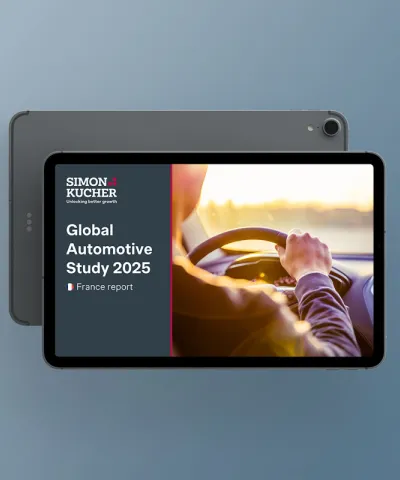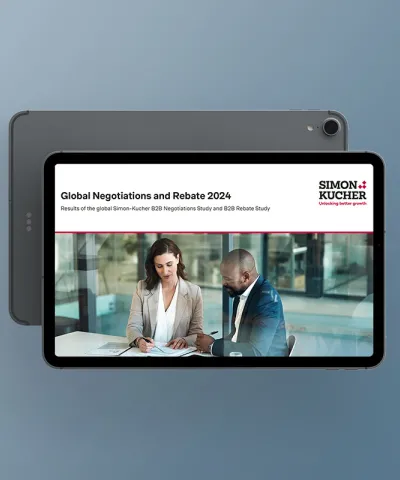What it really takes to make green pay off in industrial markets
Over the past decade, ESG has become a central narrative for industrial transformation. It has shaped boardroom agendas, guided investor relations, and provided a framework for companies navigating the shift toward more sustainable operations and offerings.
But in today’s environment of rising cost pressure, softening demand, and growing political scrutiny, that narrative is under pressure.
The question many leaders are now asking, often behind closed doors, is simple:
“Is ESG dead?”
The answer, of course, is more nuanced. ESG is not dead, but it is changing. It’s no longer the automatic strategic north star it once was. In many markets, the language of ESG has become politicized, the expectations inflated, and the business case less clear-cut. Companies that once built roadmaps around ESG ratings and pledges are now asking harder questions:
- Where does sustainability really create value?
- How do we recover green investments in cost-sensitive industries?
- How do we move beyond reporting — and into commercial impact?
As Jens Birgersson, former CEO of ROCKWOOL (2014–2024), put it bluntly:
“Focus on solving the Big E. Because if we do not solve it, there is no S & G left to solve.”
This shift — from narrative to action, from framework to focus — is especially urgent across industrial goods sectors: From chemicals and engineered materials to machinery, components, and automation, customers increasingly demand more sustainable products, but often resist paying more for them.
The tension is particularly pronounced for upstream players, such as chemicals, glass, metals, or cement companies, who bear much of the burden to decarbonize early in the value chain. Their customers, including B2B and B2C brands, depend on them to meet Scope 3 targets, and many of them have already committed significant capital toward green industrial transformation. For these players, sustainability is not a trend, but a structural necessity.
The challenge isn’t whether to go green. It’s how to commercialize sustainability in a market that is more cautious, fragmented, and cost-focused, and in many cases, where access to low-carbon energy remains uneven or constrained.
From ESG ambition to commercial pressure
In our 2024 sustainability reflections, we highlighted how early movers were redesigning their product offerings, responding to customer demands, and building new business models around green value. That remains true, but the commercial context has shifted.
Today, we’re seeing a growing divergence between ambition and payoff.
In the US, ESG is becoming politically polarized. Companies are increasingly framing sustainability in terms of energy security, compliance, and tax-efficient investment, especially under the Inflation Reduction Act (IRA). In Europe, by contrast, ESG momentum continues, but is often weighed down by growing bureaucracy, from CSRD reporting requirements to taxonomy alignment.
As one executive put it: “We’re spending more time filling out templates than transforming operations.”
At the same time, customers increasingly expect lower-impact products, but still challenge price premiums, especially in commoditized or spec-driven segments. That tension is real, particularly in B2B industries with long purchasing cycles or cost-based procurement norms.
This is forcing companies across industrial sectors to ask: How do we turn sustainability from a compliance cost into a competitive advantage?
Where companies struggle
Common pitfalls we see across industrial sectors include:
- Pursuing sustainability initiatives without a matching commercial strategy
- Relying on broad ESG messaging without specific product differentiation
- Assuming customers will accept green premiums — and being surprised when they don’t
- Underinvesting in commercial tools to position sustainability as a value driver
Yet, even in a softening economy, some companies are succeeding by aligning sustainability with real business levers:
- Hydro Aluminium introduced product families like Reduxa (low-carbon aluminum) and Circal (high-recycled content) to give customers tangible sustainability choices. These offerings are certified, clearly branded, and priced in tiers, allowing customers to self-select based on their willingness to pay and sustainability goals.
- Yara, in partnership with PepsiCo, has begun decarbonizing agricultural inputs across selected value chains. The model works because it aligns upstream and downstream players through long-term commitments, making sustainability a shared cost and a mutual benefit.
- Fibrant partnered with outdoor brand Didriksons to supply bio-based caprolactam for sustainable clothing applications. This is a classic downstream play: instead of focusing only on intermediate buyers, Fibrant aligned with a consumer-facing brand to make the sustainability impact visible to end customers. The verified green content enables Didriksons to tell a credible eco-story, while Fibrant gains commercial traction by connecting its product directly to a marketable consumer benefit.
What these companies share:
They don’t treat sustainability as a checkbox or generic marketing claim. They embed it in offering design, value communication, and go-to-market logic, creating tangible impact both commercially and environmentally.
What it takes to commercialize sustainability
Commercializing green requires more than ambition. It demands structure, relevance, and execution clarity. From our work with industrial leaders, five success drivers consistently stand out:
Go beyond brand: Market-specific sustainable products
Generic ESG messaging is losing traction. Companies need to define, name, certify, and promote differentiated offerings with clear sustainability value, whether that’s lower CO₂, recycled content, durability, or lower resource use.
Be transparent about footprint and impact
Buyers increasingly expect clarity, not just promises. Whether the focus is on carbon emissions, energy savings, recyclability, or total-cost-of-ownership improvements, transparency builds trust and enables pricing logic beyond basic compliance.
Link value to the customer’s context
Sustainability drivers vary. In some markets, it's about Scope 3. In others, it's waste reduction, resource security, or future regulation. Successful companies tailor their commercial narrative to the customer’s own journey and maturity level.
Partner to create and share value
In industrial ecosystems, value is often co-created. Companies that collaborate across the value chain, share data, and co-invest in solutions, especially with customers or OEMs, are better positioned to commercialize green without absorbing the full cost.
Bridge the value creation–recognition gap
It’s often not the same stakeholder who makes the investment and who captures the benefit. Whether through tiered pricing, contractual guarantees, or long-term partnerships, companies need mechanisms to ensure sustainability efforts are rewarded, not stranded.
These five drivers apply differently in every industrial context, but companies that act on them systematically are far more likely to turn green ambition into commercial success.
A moment to reframe
ESG isn’t dead — but it does need a commercial reset.
Across the industrial world, sustainability has entered the age of trade-offs. Green matters, but only when it supports product performance, customer needs, and long-term differentiation, for instance by improving total cost of ownership (e.g., through carbon cost avoidance) or creating downstream advantages in total value of ownership.
Our upcoming Chemicals, Energy & Materials Study 2025 will dive deeper into how industrial leaders across North America and Europe are managing this shift, and which commercialization strategies are emerging as the most effective.
Explore all the insights from our B2B Masterclass
Unlock practical strategies in B2B pricing, sales, and marketing
Form placeholder. This will only show within the editor








